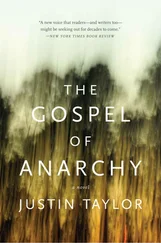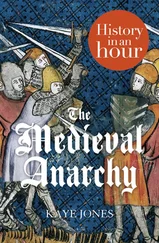He was not the most godly of men. In fact, I suspect that deep down he was a heathen – closer to his pagan myths of seers and amulets than to our Lord God. But he was a good man, all the same. When he had gone, I found the most beautiful silver crucifix by my bed. It had an inscription on the back in English: ‘Heaven Awaits, Gentle Scribe.’
My dear friend, I hope that you continue to bring your wisdom to the Holy See for many years to come. I will pray for that until my dying breath.
Pray for my soul.
Yours in God,
Gilbert
Fulham Palace, 15 November 1187
Eminence,
May I introduce myself; I am Father John, scribe to my Lord, Gilbert Foliot.
I thought you would want to know that Bishop Foliot died in his sleep two days ago, on Friday 13 November. His end was peaceful. Although his breathing became difficult, he bore it with his usual stoicism.
He was a great man of the Church here in England, much loved and much admired. His knowledge, as you will know, was immense and his gift for words beyond equal. He acted at all times with diligence and integrity. He won universal admiration within the Church for his wisdom and piety.
I am proud to say that I am one of his protégés here at Lambeth, and I pray every day that I can become half the man he was.
Before he died, he asked me to let you know that he had recently heard some news about Harold of Hereford, but that he could not verify it. It seems that Harold did his penance, as the Bishop had asked him, and that he had then travelled to Aquitaine to see Duke Richard. The bearer of the news, a trader from Bordeaux, said that Harold was still alive some time later, but was not sure of the year. No word has been heard of him since.
Typically, Bishop Gilbert was thrilled to hear the news; such was his thirst for knowledge.
We will miss him.
A mass will be said for him every day here at Fulham until the festival of Christmas. He asked in particular that we remember you in our prayers and commended us to pray for all the important work you do for the Church.
Yours in God, John
Henry II, Henry Plantagenet (5 March 1133 – 6 July 1189), ruled England for over thirty-five years, from 25 October 1154 until his death in 1189.
After his mother, Empress Matilda, left England in 1148, the young Henry continued her struggle for succession to the English throne. Shortly after he married Eleanor of Aquitaine in 1152, he invaded England with a large army. His rival, King Stephen, lost his own son, Eustace, to a sudden illness in 1153, leaving the possibility of a compromise between the King and young Henry. This was enshrined in the Treaty of Wallingford, agreed shortly after Eustace’s death: Stephen would retain the throne until his death, whereafter he would be succeeded by Henry.
King Stephen died on 25 October 1154, at Dover. He was buried at Faversham Abbey alongside his son, Eustace, and his wife, Mathilde.
Henry Plantagenet ruled a vast empire. He is regarded as one of the most significant figures of the Middle Ages and one of England’s greatest monarchs. He and Eleanor had eight children – five boys, three of whom became kings, and three girls, two of whom became queens – and he had at least three illegitimate offspring. Their marriage was, at best, fraught; Eleanor eventually plotted on behalf of her sons against Henry, for which she was placed under house arrest for fifteen years until Henry’s death. She was released by her son Richard, who was crowned Richard I of England on 3 September 1189.
Eleanor acted as regent in England while her son, Richard the Lionheart, went on the Third Crusade. She lived into the reign of her youngest son, King John. She outlived all her children, except John and Eleanor, Queen of Castile. She died on 1 April 1204, at the age of eighty-two.
Thibaud de Vermandois was elected Pope in December 1189, but refused the honour in favour of Paolo Scolari, who became Pope Clement III. De Vermandois died the following year, on 8 November 1188, just over a year after his old friend, Gilbert Foliot.
John Comnenus, Emperor of Byzantium, died on 18 April 1143, at the age of fifty-five. He was succeeded by his son, Manuel Comnenus, who ruled for the next thirty-seven years. John’s tenure, and that of his son, continued the work of the founder of the Comneni dynasty, John’s father, Alexius. The period of the Comneni dynasty is very highly regarded in the history of Byzantium.
John Comnenus’ lifelong companion, John Azoukh, died in 1150. By then, although born a slave, he had been fully integrated into the Byzantine hierarchy.
The Knights Templar continued to be a major force in the affairs of the Catholic Church for many years. They remained vital to the defence of the Holy Land, using the vast resources and manpower they had available to them in Europe.
At its peak, the Order consisted of 20,000 members, 2,000 of which were knights. But they were always surrounded by controversy. Rumours about the Templars’ secret initiation ceremony and ascetic lifestyle created mistrust.
In 1307, King Philip IV of France, deeply in debt to the Order, had many of the Order’s members arrested. They were tortured into giving false confessions, and burned at the stake. Under pressure from King Philip, Pope Clement V disbanded the Order in 1312.
Their abrupt disappearance gave rise to speculation and legends, which have kept the Templar mystique alive to the modern day.
The earliest printed version of ‘The Ballad of Robyn of Hode’ appeared sometime after 1492, called a ‘Gest of Robyn Hode’. It was a printed version of a ballad which, like many similar songs, told of the derring-do of heroes, of outlaws fighting for the oppressed and of wrongs being righted.
The earliest handwritten ballad is ‘Robin Hood and the Monk’, preserved in manuscript form at Cambridge University. It was written shortly after 1450 and it contains many of the elements still associated with the legend. There are almost thirty surviving medieval ballads referring to Robyn of Hode. The origins of the ballads are a mystery, just as there are numerous theories about the characters portrayed in them. The stories they tell may simply be legends. However, it is widely accepted that Robin Hood and his fellow outlaws reflect the deeds of various ‘outlaws’ of the eleventh and twelfth centuries – including Hereward of Bourne, those who fought with him and those who continued his fight against tyranny.
ANTIOCH, SIEGE OF
The capture of the great fortress of Antioch was vital to the success of the First Crusade – without control of Antioch, the crusaders could not have moved on to Jerusalem. The siege lasted for seven and a half months, and conditions for the crusaders were often worse than those inside the city. Located in the valley of the Orontes, in mountainous country, the city itself was on the valley floor, with the almost impregnable citadel high in the mountains above. Antioch finally fell on 9 February 1098.
APOPLEXY
Apoplexy was the word used for centuries to describe sudden loss of consciousness and death. Strokes and heart attacks will often have been described as apoplexy in the past.
ARROUAISIAN MONKS
The Abbey of Arrouaise was the centre of a form of the Augustinian monastic rule, the Arrouaisian Order, which was popular among the founders of abbeys during the 1130s. It had developed into a community which adopted the task of providing a service to travellers through the great Forest of Arrouaise in Artois, Flanders.
ARTUQID
The Artuqid dynasty was a Turkmen dynasty that ruled in Eastern Anatolia, Northern Syria and Northern Iraq in the eleventh and twelfth centuries.
Читать дальше












